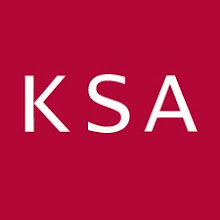Is your project team built to achieve long term project success?
Few members of the project team have the potential to impact the overall success of a project as substantially as interior designers. The earlier and the greater degree to which interior designers are involved, the more likely a project is to succeed, not just initially, but for the long term life of the project, building, or facility. This success is inherently embedded in the root of what interior designers are – experts on human behavior and the relationship of people to the built environment. Projects that focus on people first, and concrete and steel second, are far more likely to meet the needs of the client and their objectives.
Build the right team now, or provide opportunities for others later.
As a midsized to large interior design firm, KSA Interiors is an anomaly - our firm is not housed within a larger architectural or engineering firm. This provides us with the ability to position ourselves with targeted partners in the industry, those with proprietary knowledge and relationships, when pursuing projects. Finding talented architectural and engineering partners to coordinate with our own unique expertise and attention to detail has helped us solve our client’s problems and facilitate excellent project outcomes leading to a consistent portfolio of repeat clients and partners.
Our organization has benefited greatly by our targeted partnerships in the architecture and engineering industries, and has led to the types of success indicative of why it is important to build a project team around a strong and influential interior design group.
Projects that do not incorporate an influential or deeply involved interior design team, have in our experience, led to less than desirable results for the tenant or end user of a building or facility. The most telling circumstance that highlights the truth of this statement has to do with one of our organization’s largest business opportunities. Beyond the successful projects we have delivered as part of collaborative relationships with our architectural partners, we often find ourselves contracted to revise (or correct) recently constructed or renovated facilities that have been developed by other design teams. Often these projects miss the opportunity of including an influential interiors team and unfortunately do not achieve the goals and needs of the client, tenant, or end user. Decisions relative to space planning, building finishes, materials, furnishing components, and layouts end up being shortchanged in favor of other priorities; and clients and their end users are not engaged in how they use and interact with the interior environment. These missed opportunities leave our firm as the one frequently contracted to follow up and rectify the situation (or save the day!). Repeatedly and increasingly we have found the missteps of other design teams to be one of our largest opportunities. Most interestingly, these opportunities come seeking us – as our team is known for their ability to quickly and efficiently rally and remedy the issues at hand for a client who has already expended their time and money.
Our relationships with facilities managers through networking and other prior projects have helped us connect with clients and end users who find themselves frustrated by the solutions provided by previous design teams whose focus was not trained on how people use space. When facilities managers find themselves battling with poor design decisions, angry end users, and facilities that are difficult to maintain, they have sought our services to help them help their buildings achieve their true goals. They have come to understand the value an experienced interior design team brings to the table in securing a solution that is right for them and their end users.
The value of “people oriented priorities”.
Much of the value interior designers provide can be spotlighted in differences of focus and priority. While architectural teams may fail to meet the client’s needs because of unfamiliarity with the specific details of interior design, finishes, materials, furnishings, space planning etc… mostly the cause of missed opportunities is a matter of focus. Architectural teams that do not include a strong interiors component tend to bring a broad focus to a project that promotes a Macroscopic to Microscopic view. The application of a master vision can drive big thinking and broad goals that can lead to imaginative artistic statements, prestige, or imbue status. More often than not however these large visions can also be to the detriment of the end user’s individual needs or issues. Interior designers, while aware of macroscopic goals and visions, are more interested and intently focused on these specific needs. Their priorities are how a building helps people function, and how it impacts each individual. Interior designers have a different focus and they have people oriented priorities.
An intimate relationship with buildings and people.
Interior designers understand that buildings are, more than anything else, about people. They are intimately concerned with how people are impacted by the built environment around them, and their ultimate measure of success is not what something looks like, but how it impacts the people who interact with it. This impact could be emotional, physical, or motivational. It may be delivered through aesthetics or it may be delivered through function. Ultimately it will be delivered through uniquely considering the end users’ needs, and by intimately understanding and building a relationship with the client.
Projects delivered without a strong presence from the interior design team or pursued with a broad brush view of space or functionality will ultimately run the risk of failing to meet the needs of the end user. While our firm may appreciate the opportunity to solve those problems after-the-fact, the more responsible approach, and the one guaranteed to save clients time and money, is to build the right team in the beginning and to understand the true value interior designers bring to the table.
Submitted by
Christopher M. Good, CID, ASID, LEED AP
KSA Interiors Associate, Interior Designer, and Project Manager
Thursday, May 20, 2010
Subscribe to:
Posts (Atom)



